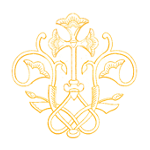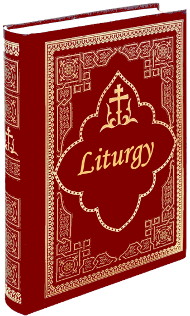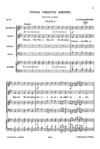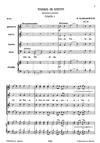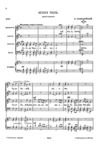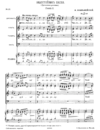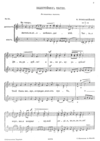Kompaneisky, Nikolai

KOMPANEISKY, Nikolai Ivanovich (b. 1848, Priyutino, nr. Taganrog; d. 17 [30] March 1910, St. Petersburg) — studied at the Nikolayevsk Cavalry School; took lessons in cello and music theory, studied vocal technique with the outstanding opera singer Osip Petrov. Was friends with the leading composers of the nascent Russian nationalist school, Alexander Dargomyzhsky, Modest Musorgsky, Alexander Serov and others, under whose influence he wrote two operas on national themes: Taras Bulba and May Night (which he subsequently burned); his other secular works — a symphony, romances — have not survived either. With the rise in the 1890s of the «New Direction» in Russian Orthodox sacred music, K. began to compose arrangements of church chants and write extensively as a musical critic and publicist (in such magazines as Russkaia muzykal'naia gazeta, Muzyka i penie, et al.) on topics related to church singing. Together with Archpriest Mikhail Lisitsyn, Semyon Panchenko, and Nikolai Cherepnin, K. comprised the St. Petersburg contingent of the New Direction.
Kompaneisky was an advocate of an unadulterated “Old Russian” style in church composition. The guiding principle of his chant arrangements was not so much the “harmonization” of church melodies, in which the top voice is underpinned with subordinate parts that lack independent interest, but rather the contrapuntal combination of characteristic melodic elements — “chantlets” (povevki) that comprise a given church chant. His works possess a churchly quality, are expressive, and display a close correlation between music and text; and while at times they may lack technical polish, this was a fact that the composer himself unapologetically admitted. Among the techniques one frequently encounters in his arrangements are elements (such as voice leading and unison cadences) consciously borrowed from Russian folk song. In his works K. attempted to introduce what he referred to as a purely Russian, vocal-choral “symphony,” based on counter-voice heterophony, applied to church music. He successfully fought for the uncensored publication of sacred choral works against the claims of the supervisory council of the Moscow Synodal Choir School; after initial difficulties in obtaining permission to publish his works, most of them (over 50) were published by P. Jurgenson. His major sacred works include the Theotokia Dogmatika in znamenny chant (1900–1903) and the Liturgy of St. John Chrysostom, based on Bulgarian chants (1906).
